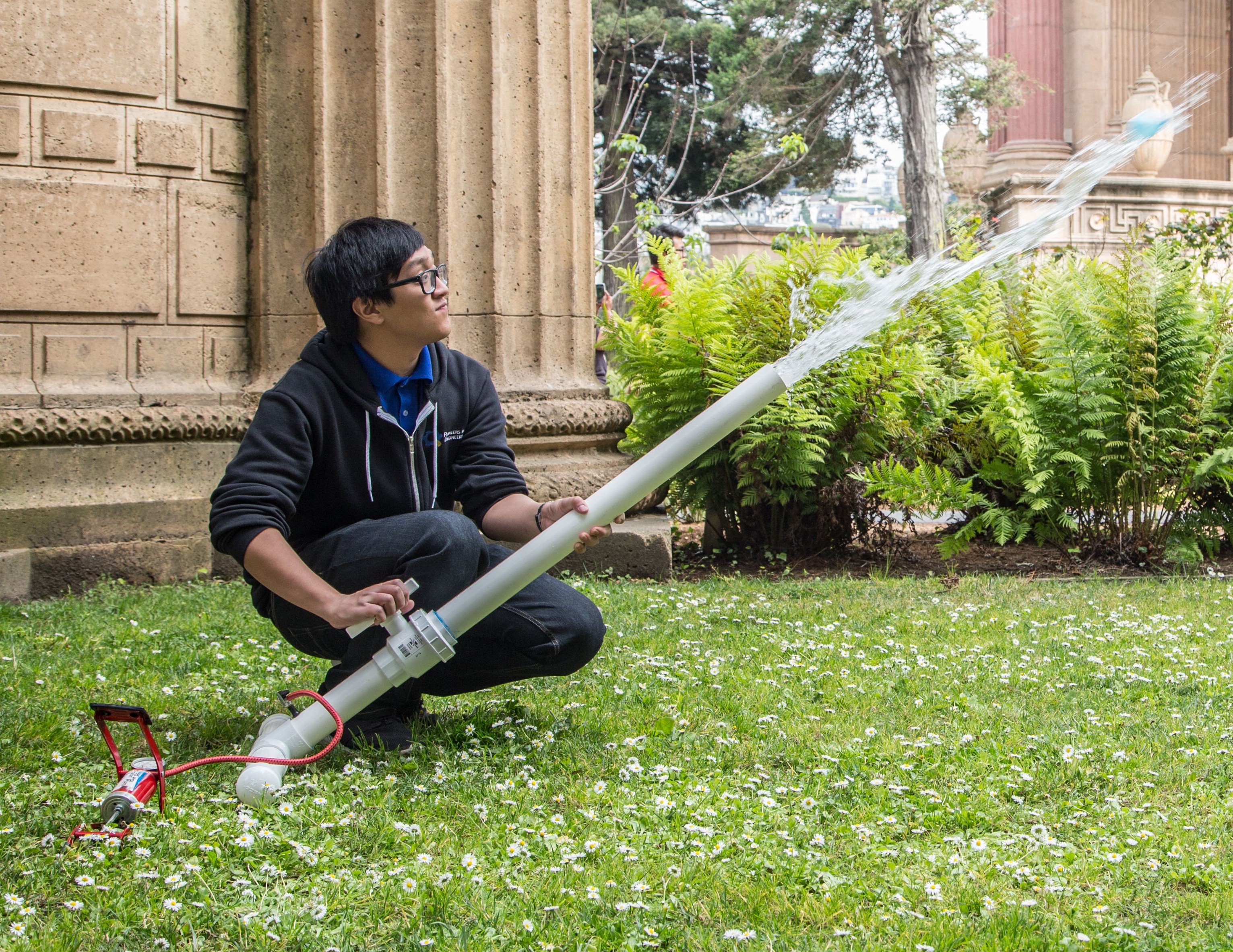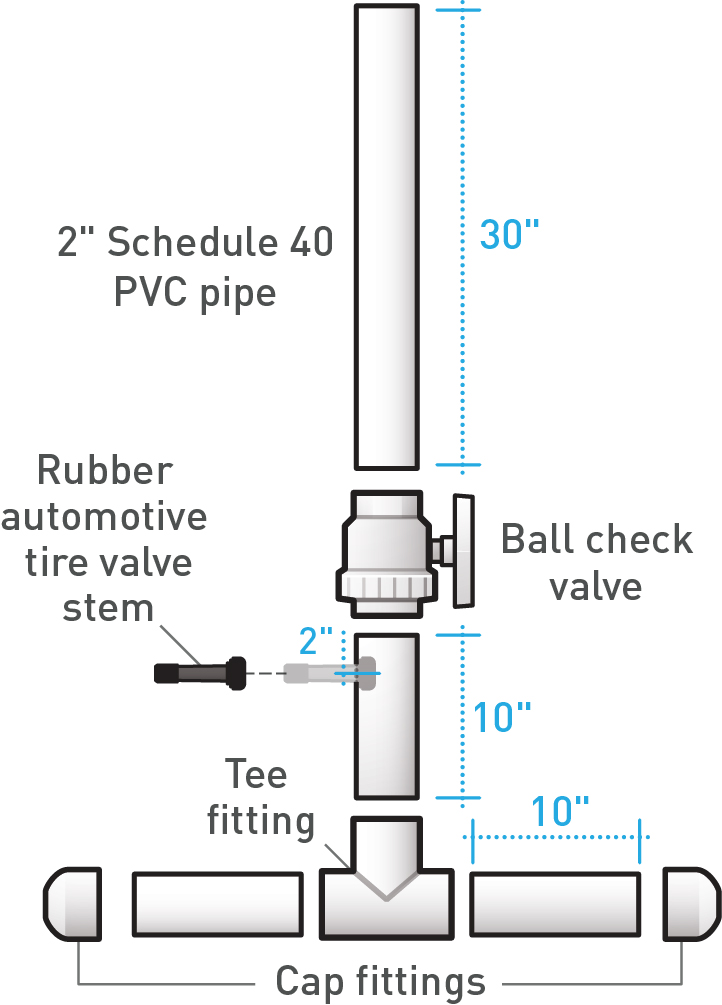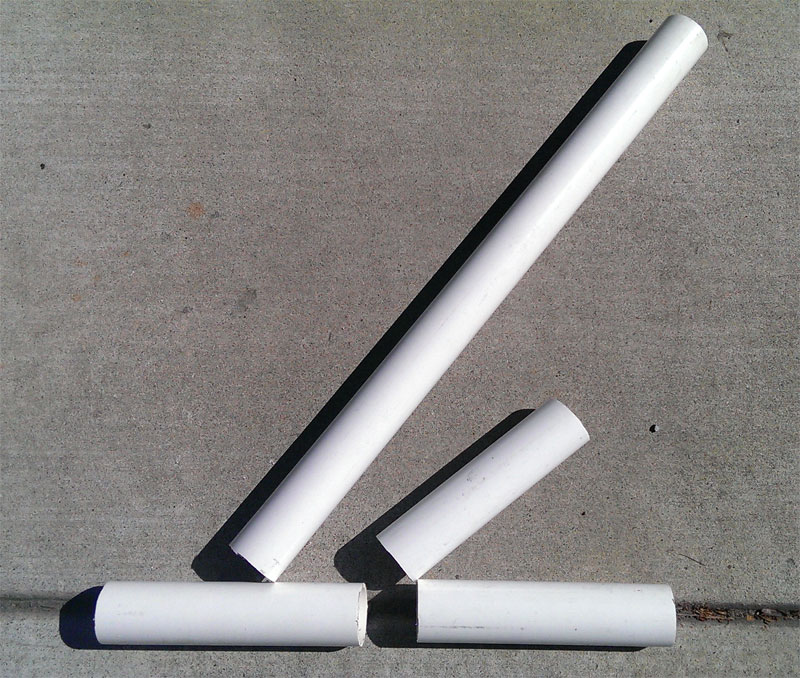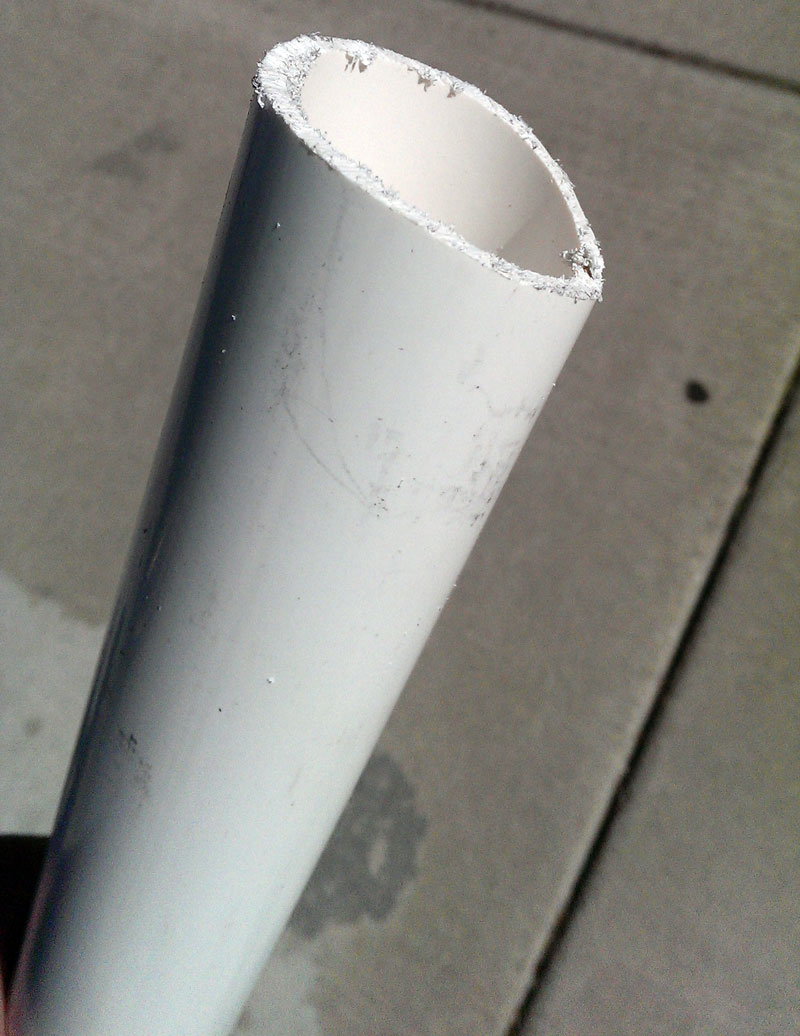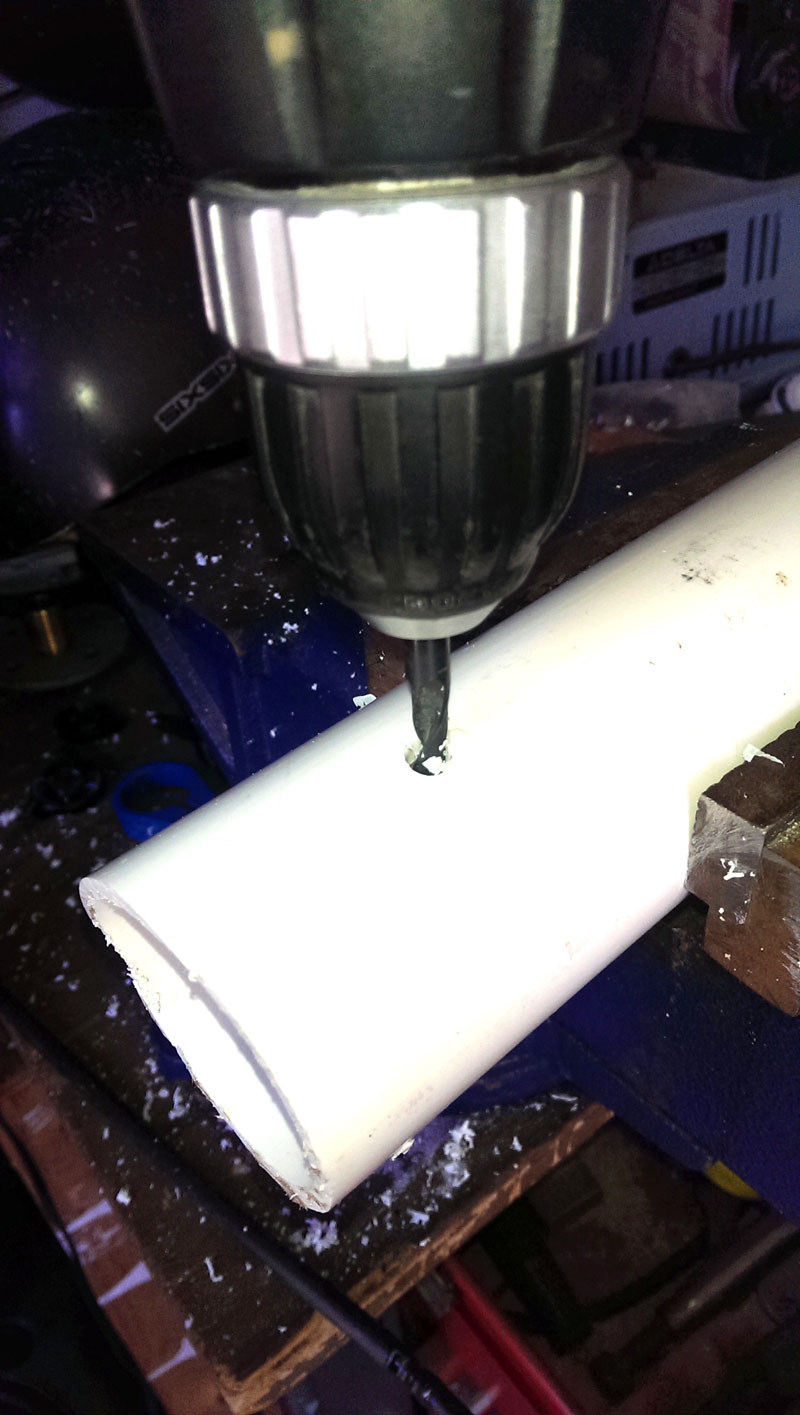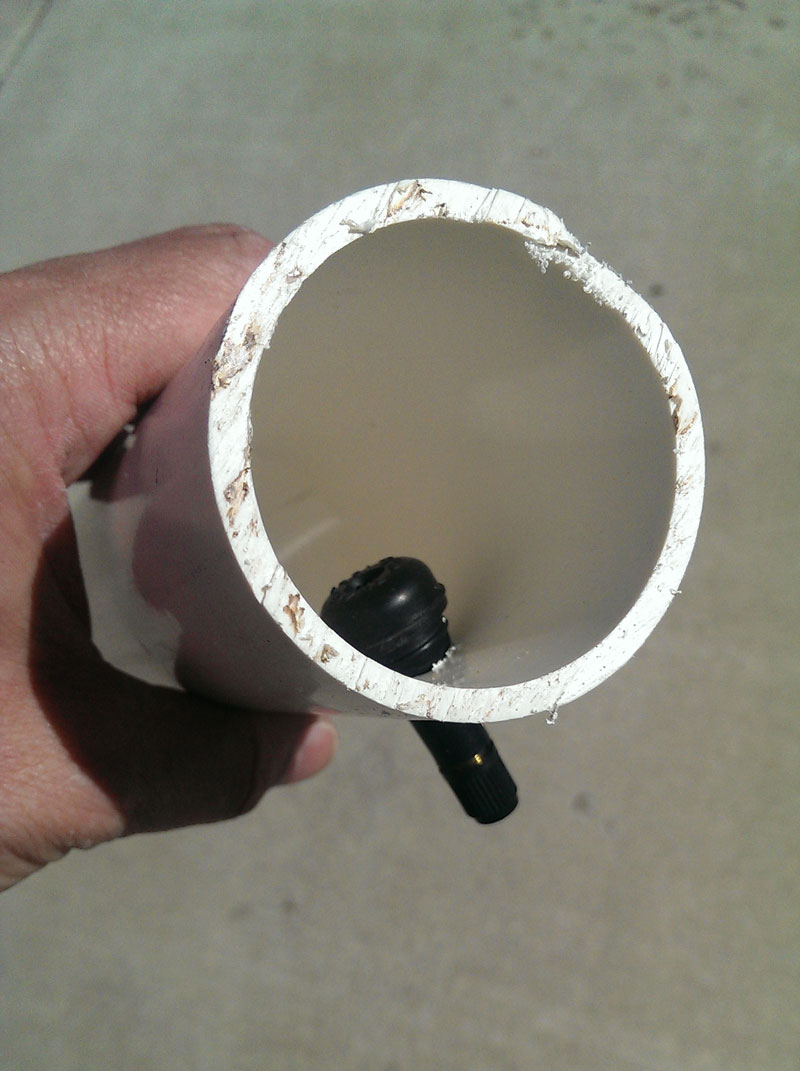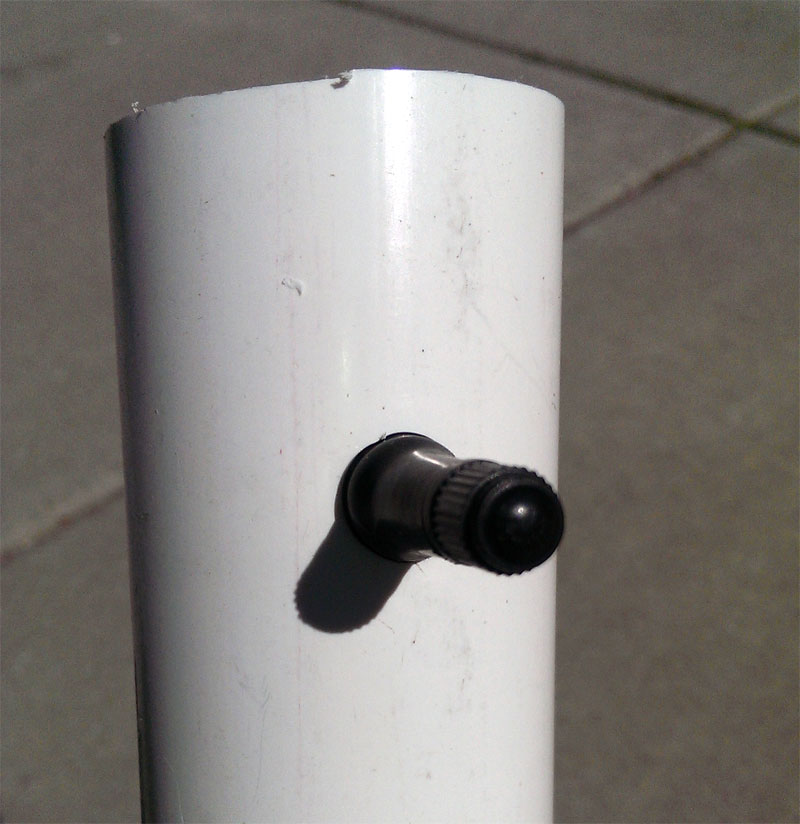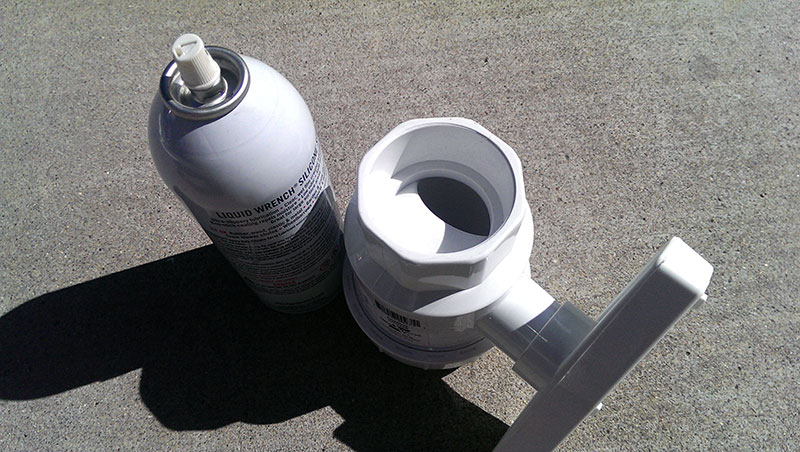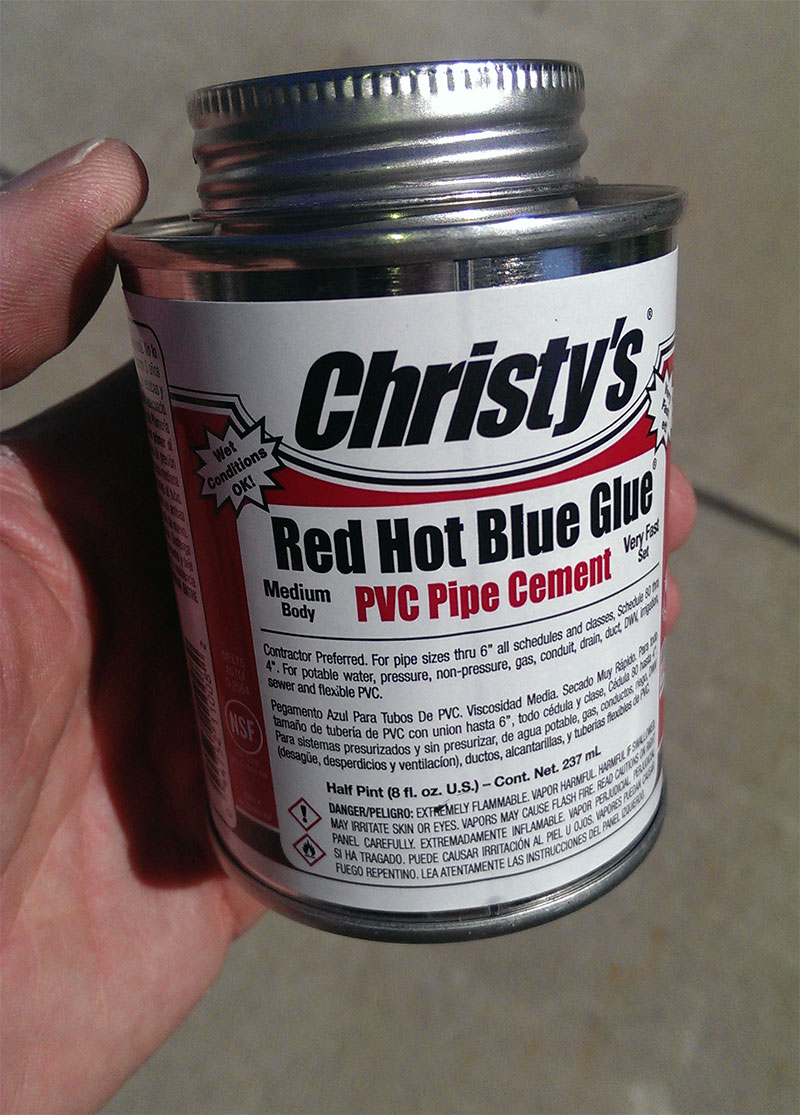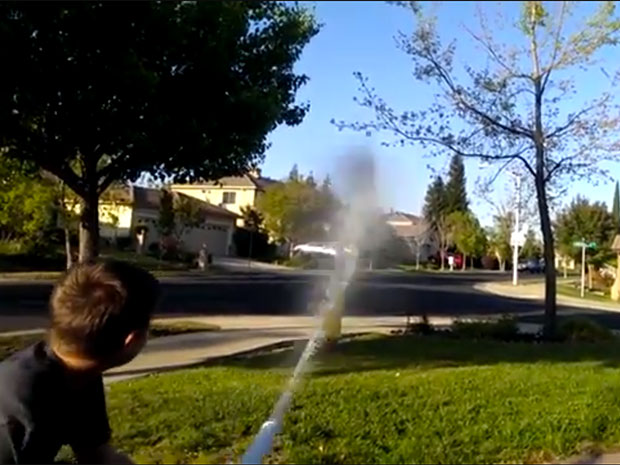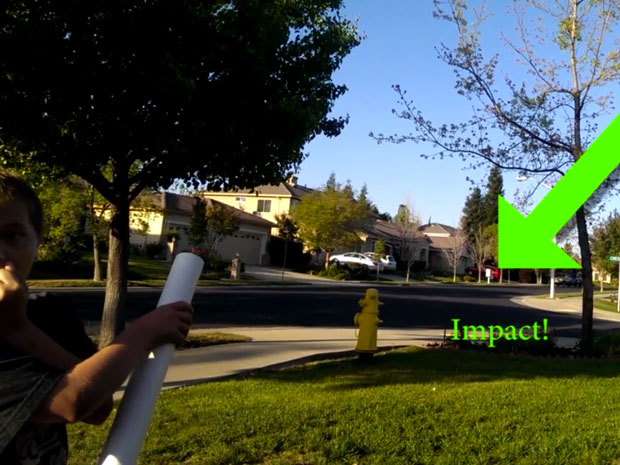If you’ve taken your time and followed the previous steps you should now have something that resembles our assembled cannon. Congratulations! You now have your fully assembled Water Balloon Cannon. To fire water balloons follow these steps:
Close your check valve. If left open your balloon will fall into the “air tank” area never to be seen again.
Pour in approximately 4–5 cups of water, or put the hose in and fill the barrel about 3–4 inches. This water in the barrel is crucial as it prevents the balloon from exploding on exit.
Fill a water balloon that is almost exactly the diameter of the barrel, about 2″. It can be smaller, and they can be squished to fit, but an overfilled balloon won’t travel very well. This takes some experimentation.
With your valve closed, your water “batting” in place, and your balloon dropped in, next you want to fill the air tank. Attach an air compressor or bicycle pump to the valve stem. If using a compressor, do not over fill with air. I would suggest approximately 20–30 psi. A bicycle pump is good at about 15–18 pumps.
Make sure you are not aiming at anyone directly (straight up is a good first test) and open the valve with a very quick motion. Pooof!! There goes your balloon followed by a trail of water. If you open the valve slowly the air will escape too easily and your balloon may barely get out of the barrel. So you want to open it fast!
There you have it. A simple yet effective water balloon cannon that will be the envy of every kid on the block. Happy water wars!




